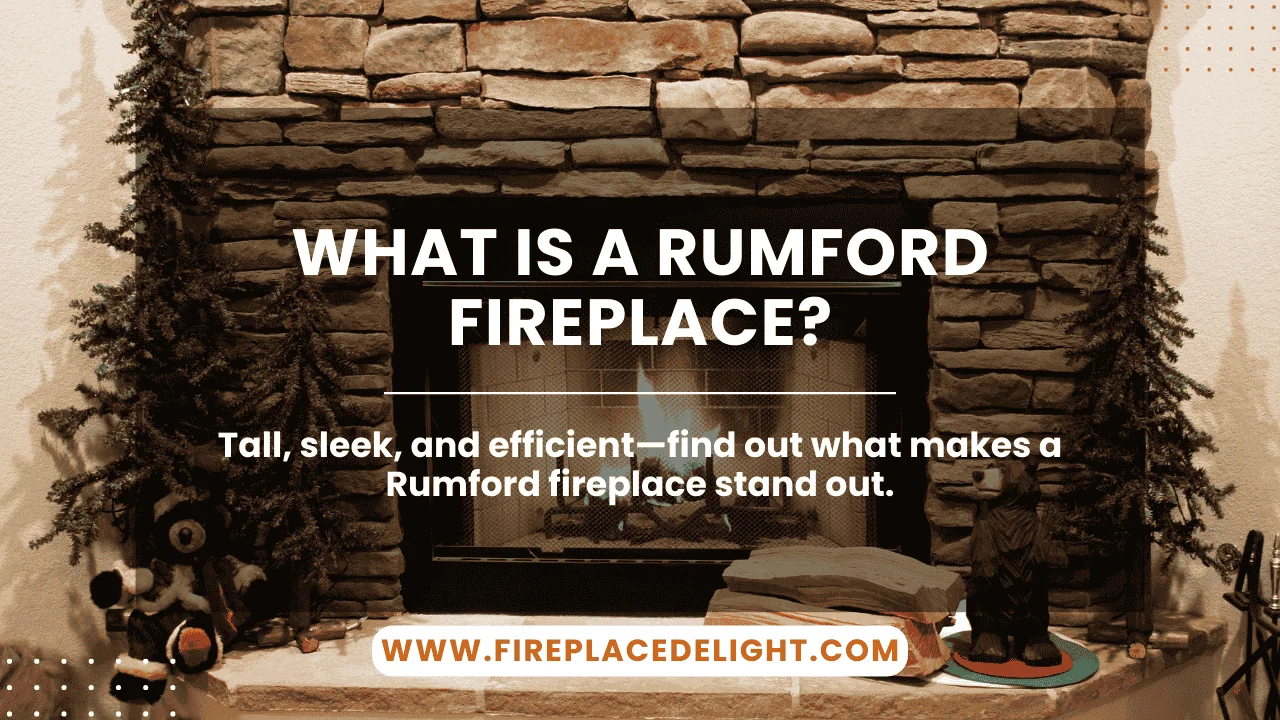If you’ve ever noticed your fireplace looking great but not doing much to actually heat the room, you’re not alone. Traditional fireplaces often let more heat escape up the chimney than they give off indoors. That’s where the Rumford fireplace stands out. Designed centuries ago but still incredibly relevant, it uses smart proportions to burn cleaner and radiate more heat into your living space. In this article, we’ll explore what makes the Rumford design so effective and why it might just outperform the fireplace you already have.

What’s So Different?
Unlike the boxy fireplaces found in many homes, a Rumford fireplace features a tall, shallow firebox with sides that gently curve inward. This specific shape isn’t just for looks; it’s engineered to reflect more heat into the room while improving airflow and reducing turbulence. The vertical design also encourages smoke to rise cleanly through the chimney, helping to prevent backdrafts and smoke spilling into the home.
Efficient vs Traditional Fireplaces
Traditional fireplaces tend to lose a large amount of heat up the chimney, making them more decorative than practical for home heating. Rumford fireplaces are built with efficiency in mind. Their streamlined design allows them to burn wood more completely and radiate more heat into the room. This means they require less wood, produce less smoke, and provide more warmth compared to standard masonry fireplaces.
Less Smoke, More Heat
One of the most noticeable differences is how cleanly a Rumford fireplace burns. Thanks to its curved throat and narrow flue opening, smoke rises smoothly without getting trapped or spilling out. This results in a more pleasant, less smoky experience inside the home. Plus, better combustion leads to less creosote buildup, which improves safety over time.
The Rumford Design
Rumford fireplaces follow a simple yet highly effective design. The firebox is tall and shallow, pushing heat forward rather than letting it rise and escape. The sides angle inwards, focusing the flames and improving combustion. The throat (just above the fire) is narrow and curved to direct smoke efficiently into the flue. Each of these elements plays a role in maximizing heat and minimizing smoke.
How Does it Work with Modern Homes?
Despite its 18th-century origin, the Rumford fireplace fits beautifully in today’s energy-conscious homes. It doesn’t rely on fans or electrical components, making it a great passive heating source. It pairs well with open-concept spaces where heat dispersion is key. Because it burns cleaner, it also works nicely with modern building codes focused on efficiency and air quality.
Materials and Build Considerations
Building a Rumford fireplace does require more precise masonry than a basic fireplace. Proper proportions are key for the design to function correctly. While you can retrofit an existing fireplace in some cases, most Rumford models are built from scratch or during major renovations. Materials typically include firebrick, refractory mortar, and a quality chimney liner to ensure smooth drafting.
In Closing
If you’re building a new home or reworking your fireplace, the Rumford design offers a serious upgrade. It provides more heat, burns cleaner, and looks beautifully timeless. Its efficiency makes it appealing for anyone who wants more than just a visual feature from their fireplace.
While traditional fireplaces have charm, Rumford fireplaces bring smart design to the heart of your home. Their simple, well-thought-out construction makes them an excellent choice for those who want reliable warmth, cleaner air, and an elegant focal point. If you’re considering a better fireplace experience, the Rumford model is one worth exploring.
- Do You Need a Grate for a Fireplace? - April 29, 2025
- What is a Water Vapor Fireplace? - April 28, 2025
- What to Put Behind a Fireplace? - April 26, 2025
